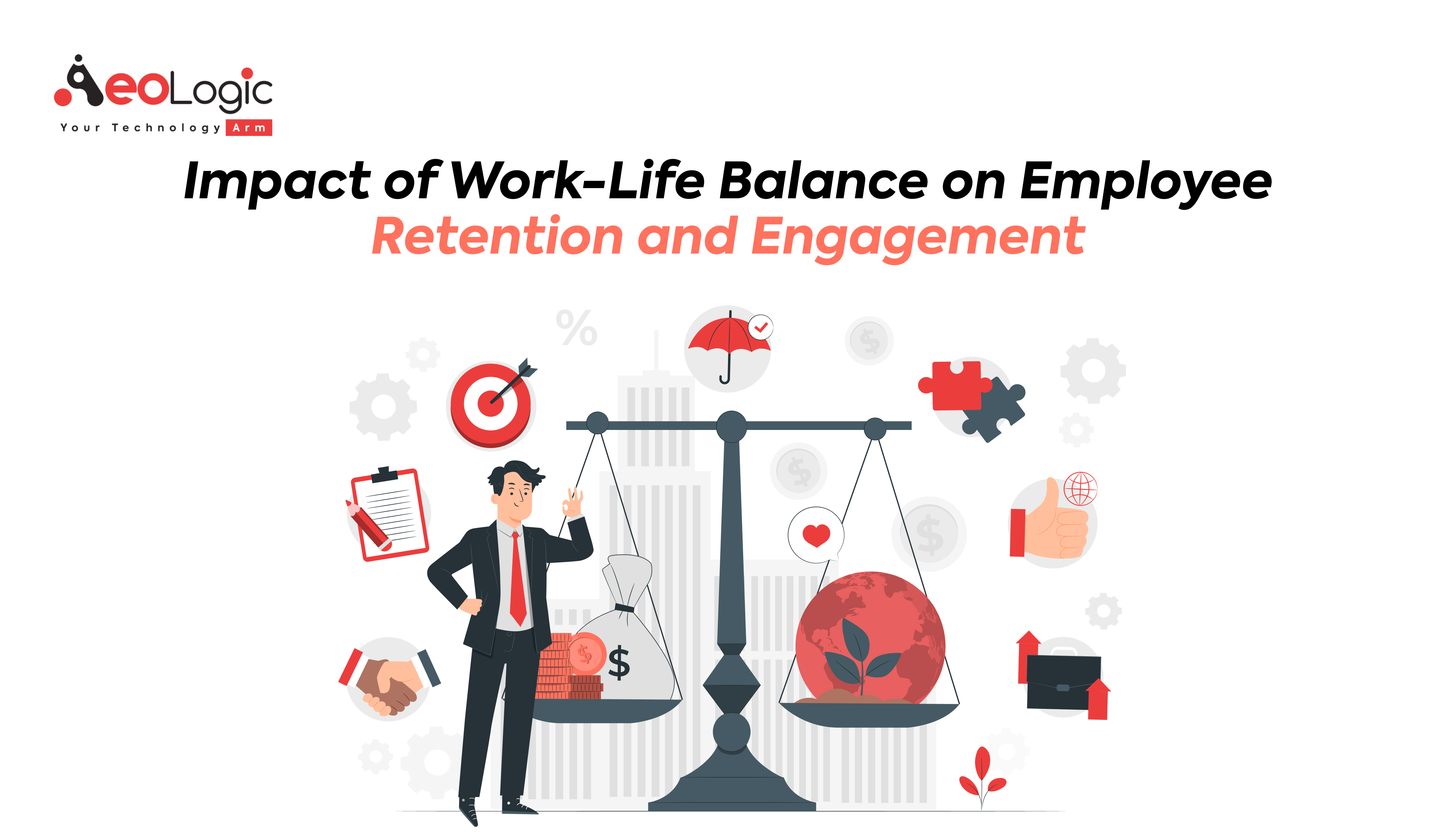It’s a beautiful Sunday afternoon. You’re sipping your freshly brewed coffee, the one that you make perfectly to your taste. Just then, your work email pings. Should you check it? Well, that’s where the balancing act between work and life begins. Many of us find ourselves on this seesaw daily. This reality leads us to an essential question: what is the impact of work-life balance on employee retention and engagement?
The Significance of Work-Life Balance

When I say “work-life balance,” what comes to your mind? A healthy balance between your work commitments and personal life is not just about having the time to relax, pursue hobbies, or spend time with loved ones. It’s also about creating a symbiotic relationship between productivity and fulfillment that ultimately cultivates a happy and engaged workforce.
According to the American Psychological Association, employees who are happy at their workplaces are 31% more productive, and their sales are 37% higher than their less content counterparts. In contrast, poor work-life balance has been associated with higher employee turnover and lower levels of commitment.
The balance that employees yearn for often becomes a pivotal factor when choosing to stay with or leave a company. Companies with good work-life balance become the sought-after workplaces, leading to higher employee retention.
Also Read: Top Tips to Improve Your Work-life Balance
The Connection Between Work-Life Balance and Employee Retention
Understanding the profound relationship between work-life balance and employee retention is not just a nicety, but a necessity in today’s fast-paced corporate world. Here, we delve into this connection more extensively, illustrating the significant impact of “work-life balance on employee retention”.
The Statistics Speak
Let’s start with some compelling figures. According to a 2018 report by the Society for Human Resource Management (SHRM), almost one-third of the employees surveyed—29%, to be precise—mentioned “work-life fit” or “work-life balance” as the most crucial aspect of job satisfaction. This statistic emphasizes the direct impact of work-life balance on employee retention.
Retention and Control: The Crucial Bond
Harvard Business School’s illuminating study underscores the relevance of work-life balance on employee retention. Their research reveals that when employees feel they have greater control over their work-life balance, the attrition rate decreases by a whopping 25%. This data affirms the pivotal role a balanced work-life environment plays in ensuring employees remain engaged and committed to their organizations.
The Engaging After-effects
The ripple effects of work-life balance extend beyond mere retention. Companies with good work-life balance foster not only long-term employee retention but also heightened engagement levels. This dual benefit brings a host of advantages like increased productivity, improved employee morale, and a healthier bottom line.
Let’s dive deeper into the tangible ways a well-maintained work-life balance influences employee engagement and retention.
1. Prevention of Burnout
Excessive work and lack of rest is a surefire recipe for burnout. When companies actively encourage work-life balance, they effectively reduce burnout, the subsequent health issues, and the frequent absences associated with it. This directly leads to enhanced productivity and, hence, improved retention.
2. Skyrocketing Job Satisfaction
Your satisfaction at work isn’t solely about the figure on your paycheck. It encompasses feeling valued, enjoying challenges, and most importantly, having enough time and energy for your life outside work. The companies with good work-life balance provide employees the flexibility they yearn for, fostering higher job satisfaction and, consequently, superior employee retention.
3. Engagement Levels Take Flight
An employee who feels their company respects their work-life balance is more likely to walk the extra mile for the organization. This is not mere conjecture; it’s backed by Gallup’s State of the Global Workplace Report, which states that companies boasting high employee engagement benefit from 17% higher productivity and 24% lower turnover.
4. Building Trust and Loyalty
Trust is fundamental in any relationship, including the one between employees and their organizations. When employees see that their company respects and values their personal life, trust is fostered. This trust subsequently manifests as loyalty towards the organization, thereby boosting retention rates. work-life balance on employee retention plays a significant role in fostering a loyal workforce that sticks around for the long haul.
5. Promoting Mental Well-being
Let’s face it, overworked employees aren’t happy employees. A good work-life balance allows employees to unwind, relax, and return to work refreshed, ultimately promoting mental well-being. Happier, healthier employees are more likely to stay with the company and perform their best, further emphasizing the impact of “work-life balance on employee retention”.
6. Attracting Top Talent
Did you know that companies with good work-life balance often attract top-tier talent? Yes, the word spreads! A good work-life balance is an attractive prospect for potential employees. When a company becomes known for its considerate work-life balance, it attracts high-quality candidates, which in turn enhances the quality of work and retention. This recruitment boost is another evidence of the significant impact of work-life balance on employee retention.
Also Read: How to Achieve Work-Life Balance Through Productivity
Effective Strategies for Promoting Work-Life Balance

Now that we’ve understood the significant impact of work-life balance on employee retention and engagement, how can companies become the coveted companies with good work-life balance? Here are a few strategies to consider:
- Flexible Schedules: By allowing flexible hours or remote work, companies can help employees balance their personal and professional lives better.
- Wellness Programs: Wellness programs or employee assistance programs can support employees’ physical and mental health, improving their overall well-being.
- Encouraging Time Off: Employees should be encouraged to take their vacation time to recharge and avoid burnout.
- Setting Boundaries: Encourage employees to set boundaries between work and personal life, such as having specific work hours or avoiding work-related communications during off-hours.
The mantra of “work-life balance on employee retention” must reverberate throughout an organization, from top management to the lowest echelons, to build a thriving, engaged workforce.
How can Companies Measure the Effect of Work-Life Balance on Employee Retention and Engagement?
While understanding the impact of work-life balance is essential, it is equally important for companies to measure this impact. Here are a few methods companies can utilize:
- Surveys and Questionnaires: Regularly conduct employee surveys or questionnaires to gauge satisfaction with work-life balance. Questions may revolve around workload, working hours, flexibility, and overall satisfaction with the balance between work and personal life.
- Exit Interviews: When employees choose to leave the company, exit interviews can provide insight into whether work-life balance influenced their decision.
- Engagement Metrics: Metrics like productivity levels, quality of work, and absenteeism can also indicate the level of employee engagement and its correlation with work-life balance.
- Retention Rates: Monitoring retention rates over time, particularly after implementing work-life balance initiatives, can provide direct evidence of the impact of these initiatives on employee retention.
- Employee Referrals: A high rate of employee referrals often indicates a satisfied and engaged workforce, suggesting a healthy work-life balance.
By measuring the impact of work-life balance on employee retention and engagement, companies can adjust their policies and strategies to foster a more satisfying, productive, and balanced work environment.
Also Read: Smart Ways to Improve your Work-Life Balance
Final Words
The impact of work-life balance on employee retention and engagement is significant. In the competitive world, we live in, companies with good work-life balance stand out, attracting, retaining, and engaging top talent. A balanced work-life culture is not just a strategy; it’s an investment in the company’s most valuable asset – its employees. Because when you’re happy and balanced, your work thrives, and so does your organization.
FAQs
How can a company help workers balance their lives better?
A company can help by letting workers choose their hours, work from home, take enough breaks, and offer health programs. A company should respect workers’ personal time and not expect them to work during their off-hours.
Does a good work-life balance really help a company?
Yes, it does. When workers have a good work-life balance, they are happier and work better. This can help a company succeed and grow.

I’m Deepika Pandey, an SEO strategist and content writer with 6+ years of experience. I create SEO-friendly content that drives traffic and engages readers. I combine data insights with creativity to help businesses grow their online presence effectively.






